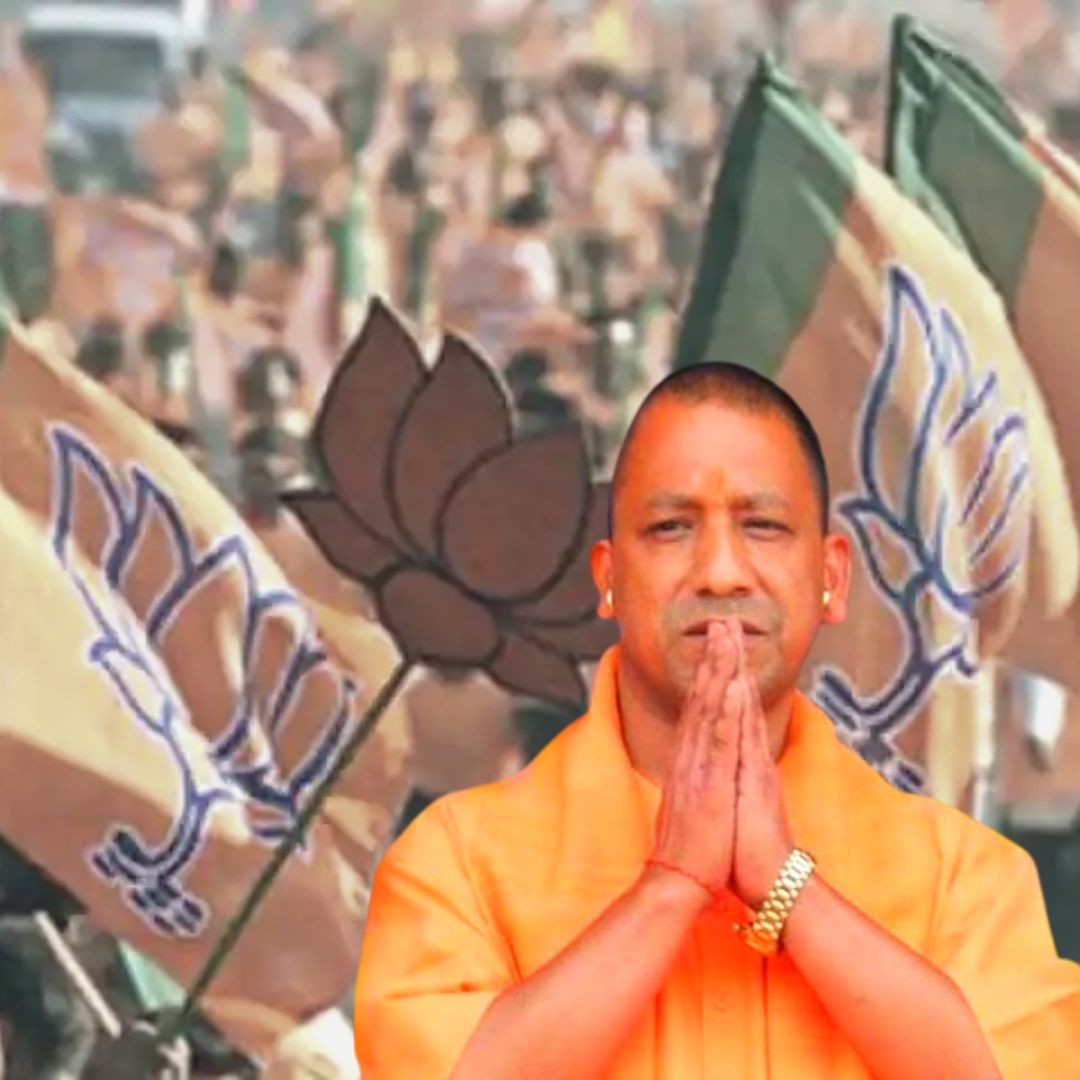
Image Credit- ZeeBiz, Twitter/ArmyOfYogi
Uttar Pradesh
UP Elections 2022: Yogi Adityanath Reassumes Power; Here's How All The Parties Performed In Polls
 |
|BJP won 255 out of 376 seats it contested with a strike rate of around 68%, while the primary opposition SP won 111 seats out of 347 seats with half the strike rate that of BJP, which is 32% approximately.
Yogi Adityanath scripted history with an unprecedented win in Uttar Pradesh (UP). While the 2017 election was fought on the Prime Minister's (PM) face, this election was more or less a test of Adityanath.
No chief minister (CM) in UP ever got re-elected after completing a 5-year term; Adityanath managed to pull off this historic victory.
While Samajwadi Party (SP) kept its entire campaign focused on issues like Old Pension Scheme (to target government employees), unemployment (to target youth), 300 units of free electricity (to target the middle-class voter); Bhartiya Janata Party (BJP) was relying purely on the free ration, charisma of PM Narendra Modi and the firebrand image of CM Yogi Adityanath.
BJP & SP In Lead
BJP won 255 out of 376 seats it contested with a strike rate of around 68%, while the primary opposition Akhilesh Yadav led SP won 111 seats (an improvement of 64 seats from its 2017 tally) out of 347 seats it contested with half the strike rate that of BJP--32% approx. SP's main ally Rashtriya Lok Dal (RLD), too, couldn't do much and managed to win just 8 out of 33 seats it contested.
Biggest Party Representing Bahujans
Bahujan Samaj Party (BSP), headed by India's tallest Dalit leader and four-term CM of the state, Mayawati, showcasing a dismal performance, won just one seat for (down from 19 in 2017) Umashankar Singh from Rasara Ballia.
Even the likes of Shyam Sundar Sharma, who had been winning Mant assembly constituency of Mathura district from 1989 and lost just once to RLD's Jayant Chaudhary in 2012 elections but later won it back in 2014 by-election, couldn't win the seat for BSP. It contested alone on all 403 seats.
India's Primary Opposition Party
India's primary opposition Indian National Congress which contested 401 seats (leaving the 2 seats of Jaswantnagar and Karhal) after a very long time, showcased yet another dismal performance. Its tally reduced from 7 in 2017 to just 2 in 2022 - Virendra Chaudhary from Pharendra Maharajganj and Aaradhna Misra Mona from her father's traditional seat of Rampur Khas in Pratapgarh district.
Priyanka Gandhi Vadra's 'Ladki Hoon Lad Sakti Hoon' doesn't seem to have worked.
Independent Contestants & Smaller Parties
Raghuraj Pratap Singh, aka Raja Bhaiya, who has been winning the Kunda seat as an independent for a long time now contested on his party symbol for the first time and managed to win both the seats - Kunda and Babaganj (Vinod Kumar); though the margins got reduced significantly on both the seats.
Smaller parties in alliance with BJP or SP did much better and are well placed above Congress and BSP both. The Nirbal Indian Shoshit Hamara Aam Dal (NISHAD) party won 6 out of the 10 seats it contested on its symbol, the Suheldev Bharatiya Samaj Party (SBSP) won 6 out of 19 seats, Apna Dal (Kamerawadi) (AD (K)) 0 out of the 2 it contested on its symbol.
Of all the parties in the poll fray, Apna Dal (Sonelal) fared the best. It bagged 12 out of 17 seats it contested at a strike rate of over 70%, even better than its principal ally BJP.
Comparison To Previous Election Stats
Of the vote share, many thought that BJP, along with its allies, had hit the peak in 2017, and it couldn't improve further, but to everyone's surprise, NDA's vote share jumped from 41.35% to 43.82%--a jump of 2.47%.
Samajwadi Party alliance (Samajwadi Party plus Congress) that polled 28.07% in 2017 elections saw a massive jump of 8.25% to take its vote share to 36.32%. But it wasn't enough to oust the mighty BJP.
It was BSP that suffered the most significant loss. BSP's vote share dropped drastically from 22.23% to 12.88%--a huge drop of 9.35%. Congress, which was contesting alone this time, could poll just 2.33% as against 6.36% it polled in 2019 Lok Sabha (since in 2017 it contested on around 100 seats, so a comparison is being made to its 2019 UP vote share).
The contest was so sharply bipolar that 398 of 403 seats remained between BJP and SP alliance. Whether the contest in UP will remain such bipolar is something to be seen. If the contest turns multi-cornered, SP might fail to repeat its 2022 performance.
Also Read: India Majorly Hit By Russia-Ukraine Conflict; GDP Growth Downgraded To 4.6%: UN Report